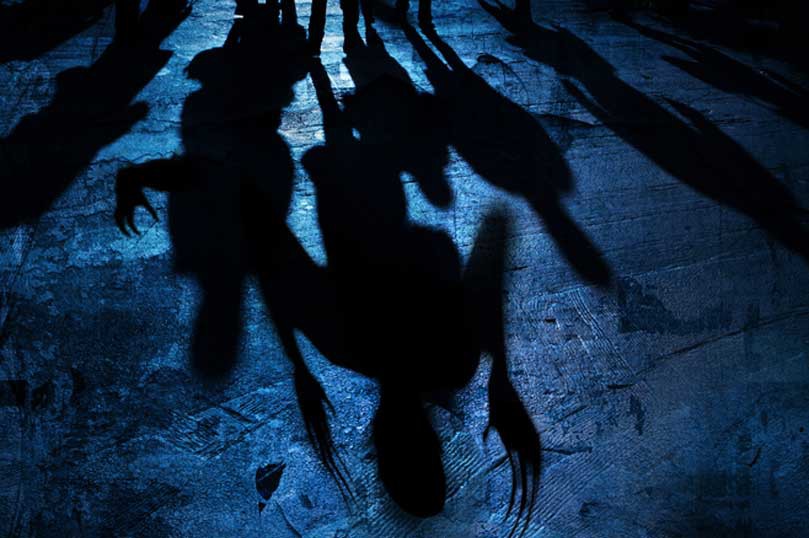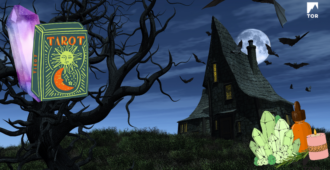opens in a new window opens in a new window
opens in a new window opens in a new window
opens in a new window opens in a new window
opens in a new window opens in a new window
opens in a new window opens in a new window
opens in a new window
opens in a new window Written by opens in a new windowJoseph Nassise
Written by opens in a new windowJoseph Nassise
“At last, the night has a hero.” That was the subtitle given to the short novel, “Cabal,” by horror fantasist Clive Barker when it was first published in 1988 and I have to admit, it’s pretty catchy. Rather cool, too, in some indefinable way. But then again, the whole book is like that.
“Cabal” was first published in 1988, as part of the sixth and final installment in Barker’s Books of Blood series in the United States and as a stand-alone edition in the United Kingdom. Two years later the story was adapted into the film, Nightbreed, written and directed by Clive himself. I discovered both the book and the film about the same time and began my love affair with the Tribes of the Moon.
The hero in question is a young man by the name of Aaron Boone. When the reader first meets him in the opening scenes of “Cabal,” he is being treated by a psychiatrist named Decker for an unspecified mental disorder. To Boone’s surprise and horror, he soon learns, through Decker, that he is responsible for the savage murders of eleven people. This is too much for him to bear and Boone tries to kill himself. When that simple act fails, he attempts to escape his fate by fleeing to the legendary city of Midian, the place “where the monsters dwell” in the wilds of Canada, a place he has been regularly seeing in his dreams for some time.
Boone sees himself as a monster, and he hopes to find sanctuary in Midian, among those he considers his own kind. What he doesn’t realize is that the so-called monsters don’t consider themselves to be monsters at all. In fact, they reserve that label for humanity, for what else would they call those who have hounded, hunted, and slaughtered them through the centuries?
This juxtaposition is part and parcel of what makes “Cabal” so intriguing. In Barker’s world there is beauty in the monstrous. There is darkness in the light. There is horror in the normal and the familiar. And he shows that to us without hesitation or subterfuge. Characters that are supposed to represent the good of society—the doctor, the cop, the priest—are all figures of darkness. The doctor, Decker, is the actual killer. His plan to escape the swift hand of justice by pinning the killings on Boone falls apart when the younger man flees. The officer of the law whom Decker enlists to track down Boone is an egomaniac concerned only with his own brand of justice. The priest, the supposed moral compass of the authorities, is nothing more than a hypocrite.
Boone, on the other hand, represents the opposite path. His conversion from human to Nightbreed to the savior known as Cabal takes him on a journey from the human to the monstrous. Far from being a figure of evil, however, he becomes the savior of the Tribes of the Moon, tasked with rebuilding the city of Midian and saving the breed from destruction by those with far less humanity than they.
The stories in Midian Unmade: Tales of Clive Barker’s Nightbreed are all extensions of this theme. Co-editor Del Howison and I sought to pick up where Clive left off, to select stories that not only illustrated what happened to the Nightbreed after the destruction of their beloved city of Midian, but also asked the reader to look deeper, to see beyond the surface, and to handle their expectations with care.
In “Cabal,” the night had a hero and his name was Boone. In Midian Unmade: Tales of Clive Barker’s Nightbreed, the night has many heroes and they are never what you expect them to be.
opens in a new window opens in a new window
opens in a new window opens in a new window
opens in a new window opens in a new window
opens in a new window opens in a new window
opens in a new window opens in a new window
opens in a new window
This article originally appeared in the opens in a new windowAugust 2015 Tor Books Newsletter.
Follow Joseph Nassise on Twitter at opens in a new window@Jnassise, on opens in a new windowFacebook, or visit opens in a new windowhim online.






